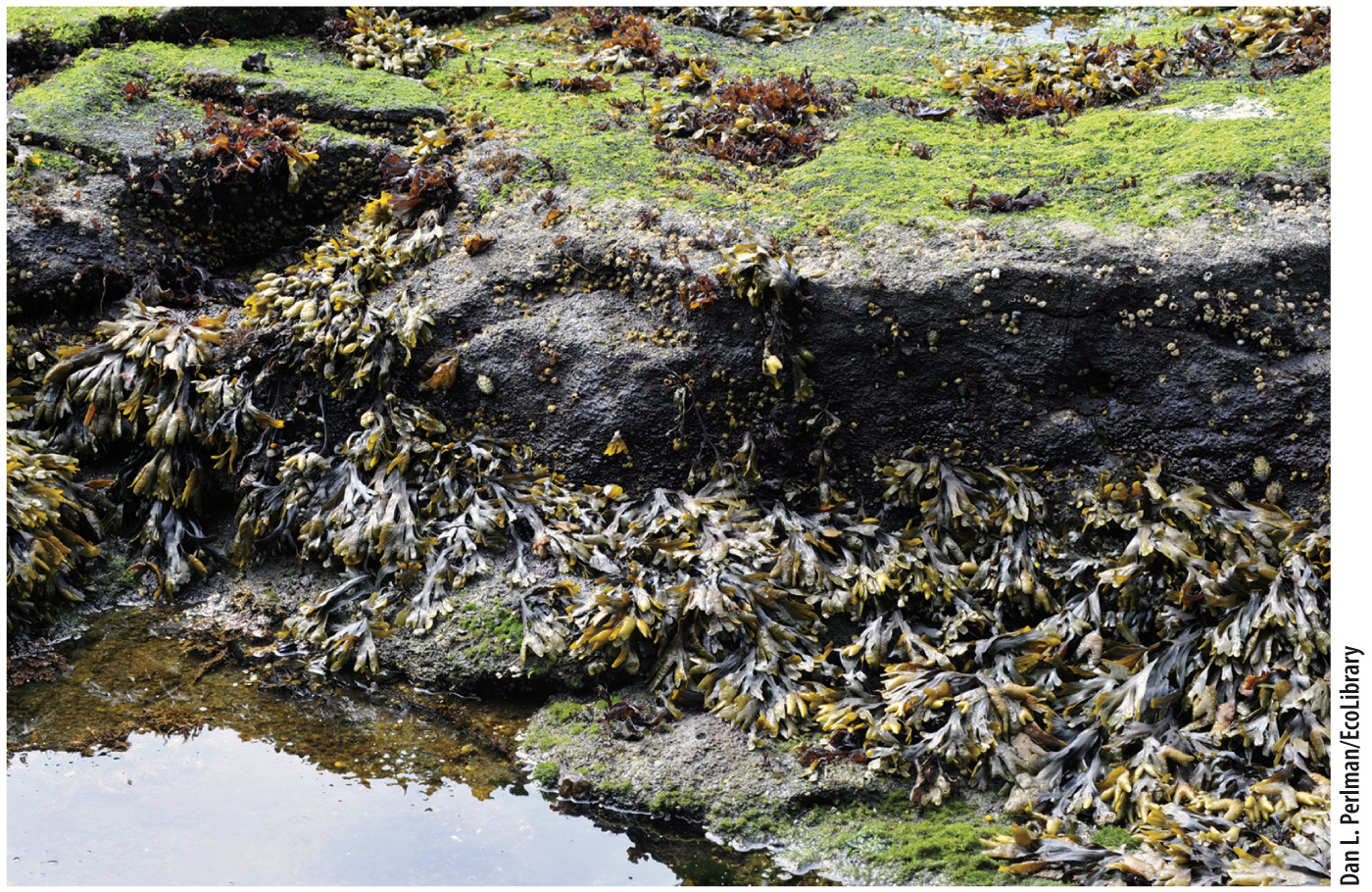
Intertidal
The part of the neritic (shallow- water) system closest to shore is the intertidal zone, with its distinctive species associations. The intertidal zone lies along coastlines between mean high and low tides, meaning that organisms in this biome are exposed to the atmosphere on a daily basis. Intertidal organisms are thus challenged by periodic desiccation as well as by temperature extremes that accompany exposure to direct sunlight. In sandy intertidal zones, or tidal flats, many animals burrow into the wet sand to escape exposure at low tide. In rocky intertidal zones, organisms may close their shells tightly— for example, mussels and barnacles. Waves can cause mortality and so, especially along rocky coastlines, both algae and animals are securely attached to the substrate. Nutrient levels can be high, favoring strong algal growth. Consumers include a variety of sea stars, sea urchins, mollusks, barnacles, and corals. Intertidal biomes exhibit the greatest diversity where tidal exposure is relatively short. Tidal pools can harbor diverse animal and algal species.
[Leave] [Close]